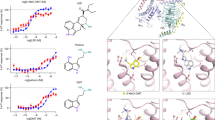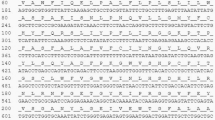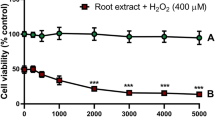Abstract
IN an earlier report1, it was concluded from evidence obtained by pharmacological tests and paper chromatography that 5-hydroxytryptamine was a constituent of the sea-anemones, Metridium senile and Calliactis parasitica. More 5-hydroxytryptamine-like material was obtainable from Metridium tentacles, with their nematocysts, than from body wall which is relatively free of nematocysts. This led to the suggestion that 5-hydroxytryptamine might be a pain-producing factor in these stinging organelles. An independent study2 of material released on discharge of isolated Metridium nematocysts yielded two hydroxyindoles tentatively identified by chromatography as 5-hydroxytryptophan and bufotenine. The identification of 5-hydroxytryptamine in Calliactis has now been made quite certain3,4. However, the very large amount found in the coelenteric organ of this species and the relatively small amount in tentacles, coupled with the finding of little 5-hydroxytryptamine in Metridium and Anemonia sulcata, led Mathias, Koss and Schachter3,4 to conclude that it is unlikely that 5-hydroxytryptamine is associated with nematocysts. Further evidence is now available that this conclusion may not be fully warranted.
This is a preview of subscription content, access via your institution
Access options
Subscribe to this journal
Receive 51 print issues and online access
$199.00 per year
only $3.90 per issue
Buy this article
- Purchase on SpringerLink
- Instant access to full article PDF
Prices may be subject to local taxes which are calculated during checkout
Similar content being viewed by others
References
Welsh, J. H., Deep Sea Res., 3, Supp., 287 (1956).
Phillips, J. H., Nature, 178, 932 (1956).
Mathias, A. P., Ross, D. M., and Schachter, M., Nature, 180, 658 (1957).
Mathias, A. P., Ross, D. M., and Schachter, M., J. Physiol., 142, 56, P (1958).
Bowman, R. L., Caulfield, P. A., and Udenfriend, S., Science, 122, 32 (1955).
Bogdanski, D. F., Pletscher, A., Brodie, B. B., and Udenfriend, S., J. Pharmacol. Exp. Therap., 117, 82 (1956).
Collier, H. O. J., in “5-Hydroxytryptamine”, edit. by Lewis, G. P. (Pergamon Press, 1958).
Welsh, J. H., and Moorhead, M., Science, 129, 1491 (1959).
Author information
Authors and Affiliations
Rights and permissions
About this article
Cite this article
WELSH, J. 5-Hydroxytryptamine in Coelenterates. Nature 186, 811–812 (1960). https://doi.org/10.1038/186811a0
Issue date:
DOI: https://doi.org/10.1038/186811a0
This article is cited by
-
Monoamine concentrations in Hydra magnipapillata
Hydrobiologia (1991)
-
Dopamine in tissues of the hydrozoan jellyfishPolyorchis penicillatus as revealed by HPLC and GC/MS
Journal of Comparative Physiology B (1989)
-
Evidence of dopa in the nerves of sea anemones
Journal of Neural Transmission (1983)
-
Histochemical Localization of Amines in Hydra and in the Sea Anemone
Nature (1964)



